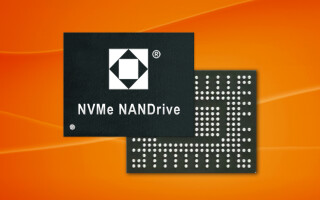AI Joins Edge Computing to Benefit System Long Term Usage
October 16, 2020
Story
Companies looking to deliver value in the AIoT marketplace will be faced with extreme design requirements. To succeed, AIoT vendors must carefully consider their entire system design.
Companies looking to deliver value in the AIoT marketplace will be faced with extreme design requirements. To succeed, AIoT vendors must carefully consider their entire system design, from hardware, to software, to integration. Selecting the right end-to-end design partner can help avoid early pitfalls while adding value to customers.
To reduce latency, lower data communication and storage costs, and increase network availability, businesses are moving AI capabilities from the cloud to the edge. To meet your AIoT computing requirements (Figure 1), it is suggested to consider the following factors for choosing an embedded hardware e-platform.
- High Computing Power for Data Calibration
- Built-In Wireless Connection
- Expansion to Vision Accelerator Card for AI Tool Kits Deployment
- Excellent Thermal Design to Secure Fanless Operation under High Computing Load
- Modula Display Capability to Suit for Visualization Human Interface Control
- Extended to Rugged Environment Installation

(Figure 1. AI enabled industrial machine automation applications, such as vision inspection, AOI, packaging inspection, process automation and intelligent monitoring, and now it moves from cloud to edge to benefit the whole solution efficiency.)
But, advanced, AI-powered imaging applications require a suite of enabling technologies. First and foremost, processors equipped with HD graphics features and hardware-accelerated video encoding/decoding are a must. Featuring a flexible modularization panel, versus a box pc combination, these modular HMI products could be quickly used for visualized tracking of the whole industrial processing control. This can make it easy to maintain and reconfigure to sustain a rapidly changing IIoT environment in a lower cost of overall ownership. However, it is a challenge to provide high computing power with vision accelerator expansion kits in a limited, compact size and fanless configuration, all while equipped with high resolution.
Wincomm introduced the advanced modular touch panel PC WLPM-900 series. It was designed to easily extend scalability under rugged industrial environment. They have developed a modular design, consisting of a box PC platform, adopted with various panels. Its sizes range from 15-, 17-, 19-, 21.5-, and 23.8 inches to suit flexible and scalable industrial IoT solutions. The WLPM series come up with the docking design, fanless with smart thermal management, waterproof and dustproof (IP66 front panel mount), and Intel® Coffee Lake-S Core™ processors to speed up data flow and increase system efficiency under longevity supply.

(Fig 2. Wincomm WLPM-900 series design to enable industrial automation modularization solutions.)




